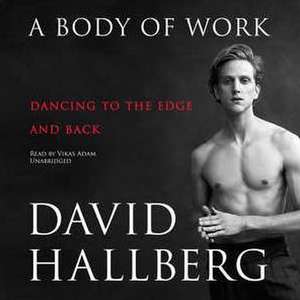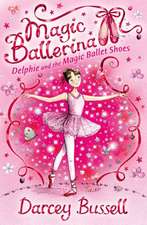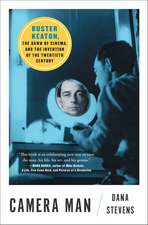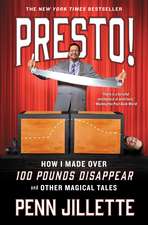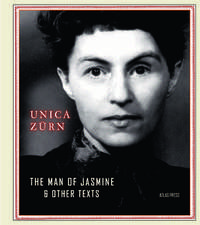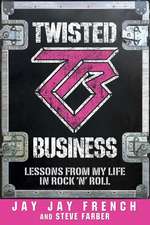A Body of Work: Dancing to the Edge and Back
Autor David Hallberg Vikas Adamen Limba Engleză CD-Audio – 6 noi 2017
Beginning with his real-life Billy Elliot childhood—an all-American story marred by intense bullying—and culminating in his hard-won comeback, Hallberg’s “moving and intelligent” (Daniel Mendelsohn) memoir dives deep into life as an artist as he wrestles with ego, pushes the limits of his body, and searches for ecstatic perfection and fulfillment as one of the world’s most acclaimed ballet dancers.
Rich in detail ballet fans will adore, Hallberg presents an “unsparing…inside look” (The New York Times) and also reflects on universal and relatable themes like inspiration, self-doubt, and perfectionism as he takes you into daily classes, rigorous rehearsals, and triumphant performances, searching for new interpretations of ballet’s greatest roles. He reveals the loneliness he felt as a teenager leaving America to join the Paris Opera Ballet School, the ambition he had to tame as a new member of American Ballet Theatre, and the reasons behind his headline-grabbing decision to be the first American to join the top rank of Bolshoi Ballet, tendered by the Artistic Director who would later be the victim of a vicious acid attack. Then, as Hallberg performed throughout the world at the peak of his abilities, he suffered a crippling ankle injury and botched surgery leading to an agonizing retreat from ballet and an honest reexamination of his entire life.
Combining his powers of observation and memory with emotional honesty and artistic insight, Hallberg has written a great ballet memoir and an intimate portrait of an artist in all his vulnerability, passion, and wisdom. “Candid and engrossing” (The Washington Post), A Body of Work is a memoir “for everyone with a heart” (DC Metro Theater Arts).
Preț: 173.11 lei
Nou
Puncte Express: 260
Preț estimativ în valută:
29.23€ • 31.85$ • 24.63£
29.23€ • 31.85$ • 24.63£
Indisponibil temporar
Doresc să fiu notificat când acest titlu va fi disponibil:
Se trimite...
Preluare comenzi: 021 569.72.76
Specificații
ISBN-13: 9781538491386
ISBN-10: 1538491389
Dimensiuni: 145 x 142 x 28 mm
Greutate: 0.23 kg
Editura: BLACKSTONE PUB
ISBN-10: 1538491389
Dimensiuni: 145 x 142 x 28 mm
Greutate: 0.23 kg
Editura: BLACKSTONE PUB
Notă biografică
David Hallberg is a Principal Dancer with American Ballet Theatre in New York. He was the first American to join the Bolshoi Ballet in Moscow as a Principal Dancer. He continues to dance around the world and is a Resident Guest Artist with The Australian Ballet. He has also started the David Hallberg Scholarship, mentoring young aspiring boys in a career in ballet, and the Innovation Initiative, a platform for emerging choreographers, both at American Ballet Theatre. A Body of Work is his first book.
Extras
A Body of Work
Morning class was an essential daily task. Like making that pot of coffee first thing in the morning. Out of bed, half-asleep, and straight to the coffee machine. Filter. Water. Coffee grinds. On switch. Every day. Day in. Day out.
By nine thirty a.m. I would shuffle into a worn studio that was always empty and silent. The only light came from the morning sun edging in through huge windows. Outside, one floor down, the streets and noise of New York City.
At first, my body resisted the task at hand, especially when I was drained from the previous night’s performance. But the work continued the following morning, as if no exertion occurred, as if I hadn’t given to the performance every ounce of my emotional and physical energy.
I started with what I often dreaded: that first small physical movement that would call me to attention, easing me out of my slumber into another day. I would always begin with the same exercises. Done at my own pace and with the understanding that if I skipped them, I would not be set up well for later, when I would need to push my body in order to transform ballet’s absurdly difficult steps into seemingly effortless movement onstage. I began with small, basic movements, continuing on to those that are more advanced and complicated, each of them essential to achieving huge jumps and whiplash turns. People often wonder why we need daily ballet class when we are already professionals. But it is when we are performing virtuoso moves that we need those classes more than ever.
The deeper I went into the movements, the further I escaped into thought. The exercises slowly became a meditative experience. My mind would wander to last night’s show, my coming travels, the day’s rehearsals, a project I wanted to develop, a choreographer I needed to contact, emails I needed to write.
As the start of class drew near, other dancers trickled into the studio, shuffling in just as tired as I was. Everyone spoke in hushed tones. The lights would be turned on by someone who needed to feel they were officially starting class. As more dancers arrived, the volume and energy picked up. Some chatted about the show the night before, about what they did after it. Others discussed the new ballet they were learning, talking as they stretched or strengthened. A few, with headphones on, weren’t yet awake enough to discuss anything. We all wore different “uniforms.” Mine was Nike sweatpants, tights underneath, a cotton T-shirt, an insulated track jacket. Traditionalists wore nothing but tights and a T-shirt or leotard, as we all did when we were training and weren’t allowed to wear “junk”: the sweatpants, leg warmers, and baggy clothes that obscure the body and keep it from being exposed to the teacher’s critical eye. But I like junk. It’s comfortable.
Fads in dance attire come and go. In the 1970s and ’80s the more tattered and ripped your practice clothes were, the better. Maybe the wear suggested the dancer was working harder than others or was too dedicated and rehearsing too hard to take the time to buy new clothes. That has changed. I’ve gotten flak from my colleagues for having holes in my dancewear. When I was promoted to Principal Dancer a friend said, “Now you’re making Principal salary, so you can afford some better-looking clothes.”
But class is not a catwalk. The important thing is not how good the clothes look on the dancer; all that matters is what’s being danced in those clothes.
Moments before class was to begin, the teacher and accompanist would enter the studio, the former standing in the front of the room, the latter taking a seat at the grand piano.
“Are we ready?” the teacher would ask, “or do we need five more minutes?”
Always five more minutes. Compulsory for dancers to do their last stretches, yoga positions, exercises with weights. Or merely to delay the recognition that the day’s responsibilities were calling.
Grace period over, the talking ceased. We assumed our usual places at the barre. These barre spots are not free for the taking. There is, in every ballet company in the world, a pecking order. All the spots—by the piano, by the mirror, at the end, in the center—are accounted for. Some are claimed by Principal Dancers, others by members of the Corps de Ballet who have stood in the same spot for years. When outsiders come to take class with a company, they know not to claim a place at the barre until class starts. And God help the new kid who takes a much-coveted spot.
With one hand placed on the barre, we began with pliés. The most basic of movements. A dancer’s training commences at a very young age and starts with pliés at the barre. Whether you’ve danced once or a thousand times, it is the plié that begins your day.
A plié is a bending of the knees with the feet positioned in specific ways. This fundamental movement is the precursor to more advanced steps. Every turn and every jump—however high or low—starts with a plié. It’s the essential taking-off point to things far more difficult and impressive. For so many years I did pliés every day with a mindless ease and agility gained through repetition. I had done this series of exercises daily for twenty years. That is what we do: repeat the same movements every day throughout the entirety of our careers. It never ceases. If we think we don’t need class and the daily focus it provides, our work slips and that slippage is eventually visible on the stage. The audience can tell; they may not know in technical terms what isn’t working, but they know that something doesn’t look right. “I can’t put my finger on it,” they’ll say, “but it didn’t quite do it for me.”
So class is critical; if the basics go, the rest goes with them.
As we moved along to more strenuous movement, still holding on to the barre, my mind would drift again. At times I would become bored. Distracted. Want another coffee. I would look out the window, wishing I could take advantage of the beautiful day. Especially on Saturdays, when it seemed that everyone in New York City was just a few blocks away, leisurely strolling through the stalls at the Union Square Greenmarket. But class pushed on. That was a saving grace. You had to dive in and take motivation from other dancers in the room as you executed the familiar steps in their never-changing order: plié, tendu, dégagé, rond de jambe, fondu, frappé, développé, grand battements.
* * *
CLASS ALWAYS HAS the same structure: barre followed by center work, during which we execute combinations of steps, some in one place and some moving across the entire studio. As they increase in complexity, class becomes more like a performance, with dancers caught between two desires: to show off to colleagues and to dance for the sheer bliss of moving. As the dancers grow ever warmer, layers of clothing come off, one by one. The daily strip-down to a leotard and tights.
After a while, the windows would steam up from the body heat of eighty exhausted, sweating dancers. Inevitably someone would write on them in the same spirit that you’d write Wash me! on the dirty windshield of a car. Here, the words were always some variation of I LOVE BALLET!, in all their intended sarcasm.
Some dancers would trail out of the studio and leave class early, saving their energy and bodies for the long rehearsal day ahead. But those who stayed would pull off stunning jumps and turns, soaring higher and higher across the studio, unleashing a whirlwind of grand leaps and fleet turns in the air. The pianist’s music would propel us as we sought to one-up each other with every successive combination.
And the music . . . ah, the music! An essential aspect of dance. The skill and enthusiasm of the pianists and what they choose to play is paramount. Their music could take me beyond where I stood. It could take me into the melody, into the small accents of the downbeat, in front of the phrase, or behind it just a bit. Or, if they were uninspired, their lack of enthusiasm could make the steps seem more grueling, deepen my fatigue, make me momentarily hate my profession. But music, as a whole, allowed me to envisage new ways of inventing my work. Lengthen where I once tightened, ascend more slowly where I once rushed. When I heard something I loved, the steps were forgotten and I just danced. Around me, others would be dancing too, all of us engulfed in the beauty that comes from the fusion of music and movement.
That euphoria occurred for me on an early morning in a nondescript daily class years ago. The first chords of Schubert’s Moment Musicaux No. 2 took me somewhere beyond my place at the barre. I was simply doing pliés, but as I heard the first chords of the No. 2 opening, I became lost in its simplistic perfection. Suddenly, I felt I embodied the music. Bending and stretching my legs, coordinating my arm movements, this everyday exercise became something ethereal, heightened, spiritual. There was godliness in the movement. Meaning and purpose. It wasn’t the pliés that changed me. It was the beauty of Schubert that possessed me. This is what music can do to a dancer, if one is open to listening.
In such moments of transcendence I was doing what I aspired to do, and loving it in the purest and most primitive way.
* * *
MY MEMORIES OF morning class bring to mind the eternal interplay among dancers that veers between intense competition and mutual support. The extreme physicality and grueling nature of ballet create unusually close attachments. We feel part of a special tribe, drawn together by shared dedication, experience, and the understanding that dance possessed us all at a very young age. Because ballet demands and consumes so much energy and time, for many dancers the world begins and ends with dance. They proceed from class to rehearsal to performance and back to class again, year after year, barely noticing life passing beyond the studio and stage. To fulfill what’s asked of us, in a physical sense, we feel that we don’t need to interact with the “real world.” Many of us never do, despite the fact that a knowledge of art and music, literature and poetry provides powerful enhancements to anyone’s dancing.
Though we become professionals at an early age, we paradoxically remain juvenile in many aspects of our lives. Our schedules are dictated to us, our ballets are chosen for us, our touring schedules are arranged by others. Our conversation revolves, for the most part, around the ballet we’re learning, the ballet master we’d rather not work with, the performance we wish we could give or the one we already gave. Our colleagues are not only our friends; they become our husbands, wives, one-night stands, occasional enemies, enduring affairs. For dancers throughout the world, all of life seems encapsulated within the confines of their own companies.
But unity of the tribe also has a dark side: our devotion to one another is inevitably trumped by our individual desire to succeed. A group of dancers drinking at a bar at night can revert to bitching about other dancers like a clique of chatty schoolgirls ensconced at the popular table. I have been subject to my own demons of jealousy when someone else got a role instead of me, or when I danced the second performance instead of opening night, or when someone else was invited to a ballet company I hadn’t yet danced for. All of us are extremely vulnerable, which leaves us craving support from our peers and opens us to moments, in class and rehearsal, when we can laugh together about the silliest, most ridiculous things. We encourage each other through those rehearsals that run late into the evening when we’re delirious from the long day’s work. We share collective discovery in rehearsals that are euphoric; we remain united through rehearsals that are a living hell. I miss the way that, on an opening night, we huddle together onstage just before the curtain rises and share a moment of “we did this together.” Even when we hate the ballet we have created with a choreographer, we still stick together, soldiering on to make the experience something constructive. It’s a remarkable and invaluable intimacy.
* * *
SOMETHING ELSE I miss: the routine that characterized every performance day. Each dancer has his or her own preshow rituals. No matter where in the world I danced, mine started invariably with morning class, with setting up my body. Then home, or to my hotel, where I’d have a relatively large lunch. Chicken, rice, salad. Not too many carbs, no sugars. Filling enough to last me through the performance but light enough to not feel like a weight in my stomach.
Soon after eating, full of food and feeling dozy, I would take a nap. One of the ballerinas I have partnered, Gillian Murphy, is famous for her two-hour sleeps. But sleeping for that long before a show would make me too groggy. So my naps lasted half an hour, or an hour at most. The moment I woke to the sound of the insistent alarm, the anxiety and stress of the show rushed into my mind. It’s happening, I would think. The wait is over.
In the shower, hot water warmed me as I mentally reviewed the steps I would soon dance. After the shower, always a shave. I have a superstition that if I don’t shave before the show, it means I have slacked off somehow and am not fully committed to the performance. I normally dressed nicely: suit, good shoes, all intended to emphasize the evening’s event, the sense of occasion. Usually there was a dinner afterward with family or friends, or a special treat when I could slip away with my manager and have a couple of drinks and dinner alone at our usual place.
I always packed clothes to sweat in when I warmed up before the show, and a greeting card for my ballerina in which I would write a merde note. “Merde” is the word dancers use when wishing each other good luck. Obviously, we’re not going to say “break a leg,” as actors sometimes do, but that we came to settle on the unlikely “merde” still amuses me.
Before I left the apartment, my feelings were a jumble of anticipation, excitement, and dread. Yet nothing compares to it. The nerves you feel with the show fast approaching. The pressure to dance your absolute best. Troublesome questions would seep in at the last moment, attacking my mind like some plague I didn’t know I’d contracted. I would careen between confidence and fear.
I can do this, let’s conquer this!
What if I miss this turn? Mess up that lift? Do I have enough stamina? Will I get it right? I have to get it right. I cannot miss this lift! It will all be over if it goes wrong!
No matter how much I’d prepared, the performance was always a risk. Anything can happen on that stage. Ballets have passages that are incredibly tricky, even potentially dangerous. One misplaced step of the foot and it can painfully twist. One slightly off-kilter landing from a high jump and something can crack that shouldn’t. Dancing virtuoso steps can feel like traversing a darkened room trying to avoid a trip wire.
* * *
I’VE ALWAYS DREADED that moment when the show is over and the coaches, director, and staff come onstage to talk to the dancers. I’d look into their eyes as if to say, “Was it good? Did I do okay?” When you perform, you subject yourself to judgment and criticism from everyone.
And when people who attended the show would praise a performance, I often suspected they were lying. I knew they felt the need to be complimentary and I understood why. They know you’ve given everything you’ve got onstage, and not to say something nice would be rude. But most times their praise produced one reaction in me: I wanted to hide. Which is perverse, considering that dancers who can’t take a compliment annoy me.
Still, their well-meant words would make me want to run up to my dressing room and see no one. To be alone with a beer. I could even feel guilty about drinking that beer. I’d think, I don’t deserve it. I didn’t dance well enough. I only deserve to work harder. Or give up.
After more than two years of not having felt that vulnerability, it strikes me that I could have been less harsh in my judgment. I wish I had focused on the sheer enjoyment of dance that I felt as a child. Accepted that nothing is ever perfect.
Yet I also believe that my harsher judgments had value. Because unless I kept questioning and recognizing my shortcomings, I couldn’t learn and I couldn’t evolve. The trick is to be realistic, balanced: to not overpraise or be easily pleased yet not judge myself too harshly, as others often tell me I do.
Once, in a rehearsal with the prima ballerina Diana Vishneva for American Ballet Theatre’s Sleeping Beauty, I danced my variation while she looked on. As I toiled away at the jumps and turns, incorporating notes from our coach, I could feel Diana peering at me from the side of the studio.
Finally she said, “You have everything ballet needs of a dancer, but you don’t know it.”
Her comment left me speechless. I will never forget those words. They made me realize that not acknowledging your own potential or talent isn’t modesty. It’s a disservice to yourself and your art form.
* * *
THESE DAYS, I am consigned to watch from the sidelines. As I try to recover, my daily routine of rehabilitation places me in the building during rehearsal hours, peeking in on a studio where a new ballet is being created or an old one is rehearsed. I take company class with the other dancers. But the difference is that I am in a cocoon, healing. After class, I watch them head off to rehearsals that I no longer have the privilege to participate in. They complain just as I did. They stress just as I stressed. But they also feel the happiness and satisfaction of having a purpose. Their goal is the final product onstage. My goal is to be able to call my dancing my own again. To execute steps proficiently enough to rehearse, let alone perform.
So what keeps me going even now, when the path is so rough and uncertain? Hunger. Since childhood I have had an insatiable hunger for dance. I cannot control it. It controls me. And it has set me on a path dictated by one essential principle: never be afraid to go where your passion leads you.
CHAPTER 1
Morning class was an essential daily task. Like making that pot of coffee first thing in the morning. Out of bed, half-asleep, and straight to the coffee machine. Filter. Water. Coffee grinds. On switch. Every day. Day in. Day out.
By nine thirty a.m. I would shuffle into a worn studio that was always empty and silent. The only light came from the morning sun edging in through huge windows. Outside, one floor down, the streets and noise of New York City.
At first, my body resisted the task at hand, especially when I was drained from the previous night’s performance. But the work continued the following morning, as if no exertion occurred, as if I hadn’t given to the performance every ounce of my emotional and physical energy.
I started with what I often dreaded: that first small physical movement that would call me to attention, easing me out of my slumber into another day. I would always begin with the same exercises. Done at my own pace and with the understanding that if I skipped them, I would not be set up well for later, when I would need to push my body in order to transform ballet’s absurdly difficult steps into seemingly effortless movement onstage. I began with small, basic movements, continuing on to those that are more advanced and complicated, each of them essential to achieving huge jumps and whiplash turns. People often wonder why we need daily ballet class when we are already professionals. But it is when we are performing virtuoso moves that we need those classes more than ever.
The deeper I went into the movements, the further I escaped into thought. The exercises slowly became a meditative experience. My mind would wander to last night’s show, my coming travels, the day’s rehearsals, a project I wanted to develop, a choreographer I needed to contact, emails I needed to write.
As the start of class drew near, other dancers trickled into the studio, shuffling in just as tired as I was. Everyone spoke in hushed tones. The lights would be turned on by someone who needed to feel they were officially starting class. As more dancers arrived, the volume and energy picked up. Some chatted about the show the night before, about what they did after it. Others discussed the new ballet they were learning, talking as they stretched or strengthened. A few, with headphones on, weren’t yet awake enough to discuss anything. We all wore different “uniforms.” Mine was Nike sweatpants, tights underneath, a cotton T-shirt, an insulated track jacket. Traditionalists wore nothing but tights and a T-shirt or leotard, as we all did when we were training and weren’t allowed to wear “junk”: the sweatpants, leg warmers, and baggy clothes that obscure the body and keep it from being exposed to the teacher’s critical eye. But I like junk. It’s comfortable.
Fads in dance attire come and go. In the 1970s and ’80s the more tattered and ripped your practice clothes were, the better. Maybe the wear suggested the dancer was working harder than others or was too dedicated and rehearsing too hard to take the time to buy new clothes. That has changed. I’ve gotten flak from my colleagues for having holes in my dancewear. When I was promoted to Principal Dancer a friend said, “Now you’re making Principal salary, so you can afford some better-looking clothes.”
But class is not a catwalk. The important thing is not how good the clothes look on the dancer; all that matters is what’s being danced in those clothes.
Moments before class was to begin, the teacher and accompanist would enter the studio, the former standing in the front of the room, the latter taking a seat at the grand piano.
“Are we ready?” the teacher would ask, “or do we need five more minutes?”
Always five more minutes. Compulsory for dancers to do their last stretches, yoga positions, exercises with weights. Or merely to delay the recognition that the day’s responsibilities were calling.
Grace period over, the talking ceased. We assumed our usual places at the barre. These barre spots are not free for the taking. There is, in every ballet company in the world, a pecking order. All the spots—by the piano, by the mirror, at the end, in the center—are accounted for. Some are claimed by Principal Dancers, others by members of the Corps de Ballet who have stood in the same spot for years. When outsiders come to take class with a company, they know not to claim a place at the barre until class starts. And God help the new kid who takes a much-coveted spot.
With one hand placed on the barre, we began with pliés. The most basic of movements. A dancer’s training commences at a very young age and starts with pliés at the barre. Whether you’ve danced once or a thousand times, it is the plié that begins your day.
A plié is a bending of the knees with the feet positioned in specific ways. This fundamental movement is the precursor to more advanced steps. Every turn and every jump—however high or low—starts with a plié. It’s the essential taking-off point to things far more difficult and impressive. For so many years I did pliés every day with a mindless ease and agility gained through repetition. I had done this series of exercises daily for twenty years. That is what we do: repeat the same movements every day throughout the entirety of our careers. It never ceases. If we think we don’t need class and the daily focus it provides, our work slips and that slippage is eventually visible on the stage. The audience can tell; they may not know in technical terms what isn’t working, but they know that something doesn’t look right. “I can’t put my finger on it,” they’ll say, “but it didn’t quite do it for me.”
So class is critical; if the basics go, the rest goes with them.
As we moved along to more strenuous movement, still holding on to the barre, my mind would drift again. At times I would become bored. Distracted. Want another coffee. I would look out the window, wishing I could take advantage of the beautiful day. Especially on Saturdays, when it seemed that everyone in New York City was just a few blocks away, leisurely strolling through the stalls at the Union Square Greenmarket. But class pushed on. That was a saving grace. You had to dive in and take motivation from other dancers in the room as you executed the familiar steps in their never-changing order: plié, tendu, dégagé, rond de jambe, fondu, frappé, développé, grand battements.
* * *
CLASS ALWAYS HAS the same structure: barre followed by center work, during which we execute combinations of steps, some in one place and some moving across the entire studio. As they increase in complexity, class becomes more like a performance, with dancers caught between two desires: to show off to colleagues and to dance for the sheer bliss of moving. As the dancers grow ever warmer, layers of clothing come off, one by one. The daily strip-down to a leotard and tights.
After a while, the windows would steam up from the body heat of eighty exhausted, sweating dancers. Inevitably someone would write on them in the same spirit that you’d write Wash me! on the dirty windshield of a car. Here, the words were always some variation of I LOVE BALLET!, in all their intended sarcasm.
Some dancers would trail out of the studio and leave class early, saving their energy and bodies for the long rehearsal day ahead. But those who stayed would pull off stunning jumps and turns, soaring higher and higher across the studio, unleashing a whirlwind of grand leaps and fleet turns in the air. The pianist’s music would propel us as we sought to one-up each other with every successive combination.
And the music . . . ah, the music! An essential aspect of dance. The skill and enthusiasm of the pianists and what they choose to play is paramount. Their music could take me beyond where I stood. It could take me into the melody, into the small accents of the downbeat, in front of the phrase, or behind it just a bit. Or, if they were uninspired, their lack of enthusiasm could make the steps seem more grueling, deepen my fatigue, make me momentarily hate my profession. But music, as a whole, allowed me to envisage new ways of inventing my work. Lengthen where I once tightened, ascend more slowly where I once rushed. When I heard something I loved, the steps were forgotten and I just danced. Around me, others would be dancing too, all of us engulfed in the beauty that comes from the fusion of music and movement.
That euphoria occurred for me on an early morning in a nondescript daily class years ago. The first chords of Schubert’s Moment Musicaux No. 2 took me somewhere beyond my place at the barre. I was simply doing pliés, but as I heard the first chords of the No. 2 opening, I became lost in its simplistic perfection. Suddenly, I felt I embodied the music. Bending and stretching my legs, coordinating my arm movements, this everyday exercise became something ethereal, heightened, spiritual. There was godliness in the movement. Meaning and purpose. It wasn’t the pliés that changed me. It was the beauty of Schubert that possessed me. This is what music can do to a dancer, if one is open to listening.
In such moments of transcendence I was doing what I aspired to do, and loving it in the purest and most primitive way.
* * *
MY MEMORIES OF morning class bring to mind the eternal interplay among dancers that veers between intense competition and mutual support. The extreme physicality and grueling nature of ballet create unusually close attachments. We feel part of a special tribe, drawn together by shared dedication, experience, and the understanding that dance possessed us all at a very young age. Because ballet demands and consumes so much energy and time, for many dancers the world begins and ends with dance. They proceed from class to rehearsal to performance and back to class again, year after year, barely noticing life passing beyond the studio and stage. To fulfill what’s asked of us, in a physical sense, we feel that we don’t need to interact with the “real world.” Many of us never do, despite the fact that a knowledge of art and music, literature and poetry provides powerful enhancements to anyone’s dancing.
Though we become professionals at an early age, we paradoxically remain juvenile in many aspects of our lives. Our schedules are dictated to us, our ballets are chosen for us, our touring schedules are arranged by others. Our conversation revolves, for the most part, around the ballet we’re learning, the ballet master we’d rather not work with, the performance we wish we could give or the one we already gave. Our colleagues are not only our friends; they become our husbands, wives, one-night stands, occasional enemies, enduring affairs. For dancers throughout the world, all of life seems encapsulated within the confines of their own companies.
But unity of the tribe also has a dark side: our devotion to one another is inevitably trumped by our individual desire to succeed. A group of dancers drinking at a bar at night can revert to bitching about other dancers like a clique of chatty schoolgirls ensconced at the popular table. I have been subject to my own demons of jealousy when someone else got a role instead of me, or when I danced the second performance instead of opening night, or when someone else was invited to a ballet company I hadn’t yet danced for. All of us are extremely vulnerable, which leaves us craving support from our peers and opens us to moments, in class and rehearsal, when we can laugh together about the silliest, most ridiculous things. We encourage each other through those rehearsals that run late into the evening when we’re delirious from the long day’s work. We share collective discovery in rehearsals that are euphoric; we remain united through rehearsals that are a living hell. I miss the way that, on an opening night, we huddle together onstage just before the curtain rises and share a moment of “we did this together.” Even when we hate the ballet we have created with a choreographer, we still stick together, soldiering on to make the experience something constructive. It’s a remarkable and invaluable intimacy.
* * *
SOMETHING ELSE I miss: the routine that characterized every performance day. Each dancer has his or her own preshow rituals. No matter where in the world I danced, mine started invariably with morning class, with setting up my body. Then home, or to my hotel, where I’d have a relatively large lunch. Chicken, rice, salad. Not too many carbs, no sugars. Filling enough to last me through the performance but light enough to not feel like a weight in my stomach.
Soon after eating, full of food and feeling dozy, I would take a nap. One of the ballerinas I have partnered, Gillian Murphy, is famous for her two-hour sleeps. But sleeping for that long before a show would make me too groggy. So my naps lasted half an hour, or an hour at most. The moment I woke to the sound of the insistent alarm, the anxiety and stress of the show rushed into my mind. It’s happening, I would think. The wait is over.
In the shower, hot water warmed me as I mentally reviewed the steps I would soon dance. After the shower, always a shave. I have a superstition that if I don’t shave before the show, it means I have slacked off somehow and am not fully committed to the performance. I normally dressed nicely: suit, good shoes, all intended to emphasize the evening’s event, the sense of occasion. Usually there was a dinner afterward with family or friends, or a special treat when I could slip away with my manager and have a couple of drinks and dinner alone at our usual place.
I always packed clothes to sweat in when I warmed up before the show, and a greeting card for my ballerina in which I would write a merde note. “Merde” is the word dancers use when wishing each other good luck. Obviously, we’re not going to say “break a leg,” as actors sometimes do, but that we came to settle on the unlikely “merde” still amuses me.
Before I left the apartment, my feelings were a jumble of anticipation, excitement, and dread. Yet nothing compares to it. The nerves you feel with the show fast approaching. The pressure to dance your absolute best. Troublesome questions would seep in at the last moment, attacking my mind like some plague I didn’t know I’d contracted. I would careen between confidence and fear.
I can do this, let’s conquer this!
What if I miss this turn? Mess up that lift? Do I have enough stamina? Will I get it right? I have to get it right. I cannot miss this lift! It will all be over if it goes wrong!
No matter how much I’d prepared, the performance was always a risk. Anything can happen on that stage. Ballets have passages that are incredibly tricky, even potentially dangerous. One misplaced step of the foot and it can painfully twist. One slightly off-kilter landing from a high jump and something can crack that shouldn’t. Dancing virtuoso steps can feel like traversing a darkened room trying to avoid a trip wire.
* * *
I’VE ALWAYS DREADED that moment when the show is over and the coaches, director, and staff come onstage to talk to the dancers. I’d look into their eyes as if to say, “Was it good? Did I do okay?” When you perform, you subject yourself to judgment and criticism from everyone.
And when people who attended the show would praise a performance, I often suspected they were lying. I knew they felt the need to be complimentary and I understood why. They know you’ve given everything you’ve got onstage, and not to say something nice would be rude. But most times their praise produced one reaction in me: I wanted to hide. Which is perverse, considering that dancers who can’t take a compliment annoy me.
Still, their well-meant words would make me want to run up to my dressing room and see no one. To be alone with a beer. I could even feel guilty about drinking that beer. I’d think, I don’t deserve it. I didn’t dance well enough. I only deserve to work harder. Or give up.
After more than two years of not having felt that vulnerability, it strikes me that I could have been less harsh in my judgment. I wish I had focused on the sheer enjoyment of dance that I felt as a child. Accepted that nothing is ever perfect.
Yet I also believe that my harsher judgments had value. Because unless I kept questioning and recognizing my shortcomings, I couldn’t learn and I couldn’t evolve. The trick is to be realistic, balanced: to not overpraise or be easily pleased yet not judge myself too harshly, as others often tell me I do.
Once, in a rehearsal with the prima ballerina Diana Vishneva for American Ballet Theatre’s Sleeping Beauty, I danced my variation while she looked on. As I toiled away at the jumps and turns, incorporating notes from our coach, I could feel Diana peering at me from the side of the studio.
Finally she said, “You have everything ballet needs of a dancer, but you don’t know it.”
Her comment left me speechless. I will never forget those words. They made me realize that not acknowledging your own potential or talent isn’t modesty. It’s a disservice to yourself and your art form.
* * *
THESE DAYS, I am consigned to watch from the sidelines. As I try to recover, my daily routine of rehabilitation places me in the building during rehearsal hours, peeking in on a studio where a new ballet is being created or an old one is rehearsed. I take company class with the other dancers. But the difference is that I am in a cocoon, healing. After class, I watch them head off to rehearsals that I no longer have the privilege to participate in. They complain just as I did. They stress just as I stressed. But they also feel the happiness and satisfaction of having a purpose. Their goal is the final product onstage. My goal is to be able to call my dancing my own again. To execute steps proficiently enough to rehearse, let alone perform.
So what keeps me going even now, when the path is so rough and uncertain? Hunger. Since childhood I have had an insatiable hunger for dance. I cannot control it. It controls me. And it has set me on a path dictated by one essential principle: never be afraid to go where your passion leads you.
Recenzii
"Candid and engrossing...It's about love--crazy, confusing love, an artist's obsessive love for his art."
"Elegant...fascinating...inspiring...Anyone interested in the creative process will appreciate this thoughtful account of the life of an accomplished artist."
“It comes as no surprise that David Hallberg’s moving and intelligent memoir should display the extraordinary qualities—of intelligence, elegance, liveliness and, yes, wit—that have marked his extraordinary dancing over the past decade. This tale of an artist’s crisis and astonishing recovery eschews any self-pity, instead taking power from the strengths characteristic of the best dancers: resilience, unsentimental self-awareness, and an inextinguishable joy. A wonderful book for balletomanes and everyone else.”
“David demonstrates well the emotional as well as physical demands of dance.”
"Unsparing...an inside look at...the endless hours of rehearsal, the preparation that informs the tiniest of details, the constant traveling, the brief thrill of performance."
“An inspiring story of Hallberg's rise to the pinnacle of his profession and his battle to reclaim his career. A moving…account of every dancer's worst nightmare and the sacrifices required to overcome it."
“Performing as effortlessly on the page as he does on the stage, Hallberg, who returned to ABT in top form this year, writes about the technicalities of his craft with clarity and precision. Readers of every taste will find much to relish in his inspiring book (balletomanes will consume it in a couple of sittings). Should Hallberg choose to take it on when he retires, a new role may await him: writer.”
"What makes A Body of Work a must-read is the raw honesty with which Hallberg describes the intense lonliness of a jet-setting career, his oscillation between extreme perfectionism and uninspired listlessness, and his harrowing mindset as he faced, and ultimately overcame, what was nearly a career-ending injury."
"Compelling...for anyone who would like to get to an intimate view of the creative process and the challenges, dedication, and euphoria of being an artist....It's a book for everyone with a heart."
"Elegant...fascinating...inspiring...Anyone interested in the creative process will appreciate this thoughtful account of the life of an accomplished artist."
“It comes as no surprise that David Hallberg’s moving and intelligent memoir should display the extraordinary qualities—of intelligence, elegance, liveliness and, yes, wit—that have marked his extraordinary dancing over the past decade. This tale of an artist’s crisis and astonishing recovery eschews any self-pity, instead taking power from the strengths characteristic of the best dancers: resilience, unsentimental self-awareness, and an inextinguishable joy. A wonderful book for balletomanes and everyone else.”
“David demonstrates well the emotional as well as physical demands of dance.”
"Unsparing...an inside look at...the endless hours of rehearsal, the preparation that informs the tiniest of details, the constant traveling, the brief thrill of performance."
“An inspiring story of Hallberg's rise to the pinnacle of his profession and his battle to reclaim his career. A moving…account of every dancer's worst nightmare and the sacrifices required to overcome it."
“Performing as effortlessly on the page as he does on the stage, Hallberg, who returned to ABT in top form this year, writes about the technicalities of his craft with clarity and precision. Readers of every taste will find much to relish in his inspiring book (balletomanes will consume it in a couple of sittings). Should Hallberg choose to take it on when he retires, a new role may await him: writer.”
"What makes A Body of Work a must-read is the raw honesty with which Hallberg describes the intense lonliness of a jet-setting career, his oscillation between extreme perfectionism and uninspired listlessness, and his harrowing mindset as he faced, and ultimately overcame, what was nearly a career-ending injury."
"Compelling...for anyone who would like to get to an intimate view of the creative process and the challenges, dedication, and euphoria of being an artist....It's a book for everyone with a heart."
